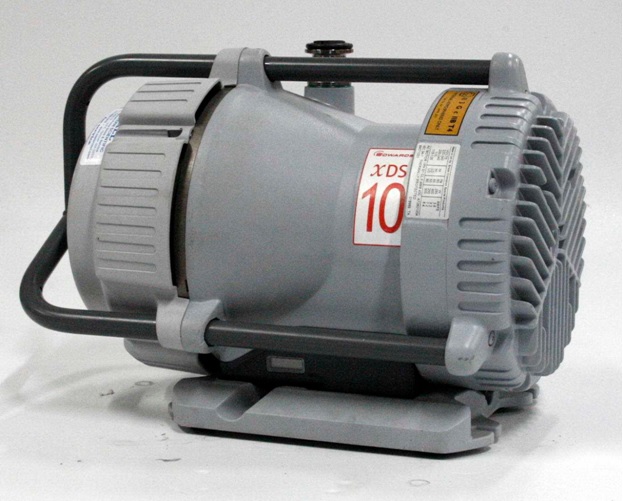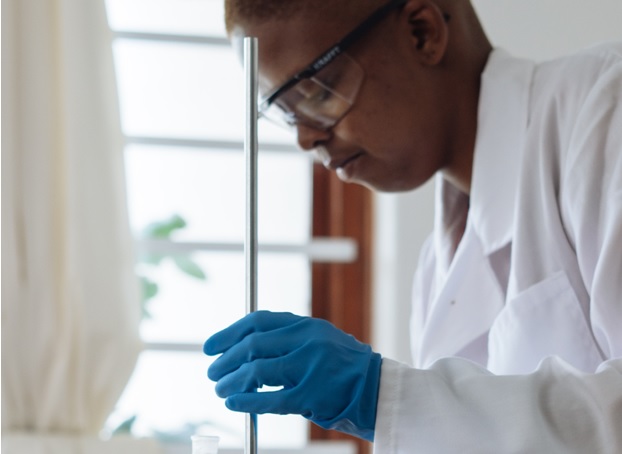
Basic Lab Vacuum Pump Maintenance
28th Apr 2023

Laboratories serving a wide range of industries and verticals use lab vacuum pumps - including but not limited to the food and beverage, computer and electronics, medical, and plastic and chemical manufacturing industries, to name just a few.
These devices create a vacuum by removing a gas - typically atmospheric air - from a sealed chamber. This creates an area of low pressure, as close as possible to 0 Pa, in which there are no or almost no gas molecules.
Lab vacuum pumps have a wide range of uses including but not limited to filtration and distillation, solvent extraction, and freeze-drying. Some vacuum pumps can be used for removing and isolating dangerous materials, too, and they also have many other uses.
These are complex mechanical devices that remove gas molecules from an environment either through positive displacement, momentum transfer, or other physical processes, such as adsorption or ionization.
Moreover, there are many different types of lab vacuum pumps, but all of them require periodic and routine maintenance.
Why Lab Vacuum Pump Maintenance Is Critical to Efficiency and Process Quality
Vacuum pumps are complex and costly pieces of laboratory equipment that are often vital to the operations of the laboratory facility that uses them.
Therefore, routine lab vacuum pump maintenance, as prescribed by the manufacturer, is essential to ensure smooth, efficient operation and protect the lab against unexpected breakdowns and failures that can incur costly operational downtime.
Here are some of our best suggestions for basic lab vacuum pump maintenance.

Basic Vacuum Pump Maintenance Checklist
While there are many different models and types of lab vacuum pumps, these basic maintenance tips will help ensure the operability and longevity of your equipment.
- Defer to the owner’s manual or contact the manufacturer
The first and most important recommendation we can make is that you follow all maintenance procedures and checks directed by the manufacturer owner’s manual. All different lab vacuum pumps have different parts and operate differently (for instance, oil-sealed rotary vane pumps vs. scroll pumps). Therefore, while this guide can be a helpful starting point, only the manufacturer can furnish you with model or system-specific instructions on how to administer maintenance, make repairs, and replace parts. If you can’t find your manual, simply go online and visit the manufacturer’s website. Most of them will be published there; if you still can’t find it reach out to the manufacturer directly.
- Check for oil leaks, change the oil and filter
The oil in your vacuum pump is like the system’s lifeblood, which lubricates the moving parts and helps protect against friction and heat-related damage.
Inspect your oil levels as indicated by the manufacturer and refill when the oil levels are low. Fresh, clean oil is almost colorless or is a pale straw color. Burned oil is dark brown, almost black. Anytime your oil is a dark tea color, it will need to be changed.
The industry standard for lab vacuum pump oil changes is once per 3,000 service hours - but you should defer to your owner’s manual and change the oil sooner if it has become dark.
When you change the oil, change all oil filters as well, as these filters help remove particulate contaminants from circulation and will help prevent damage to the system.
- Perform leak inspection/testing
All types of lab vacuum pumps will leak in some capacity or another, For this reason, operators often place their pumps on an absorbent fabric to help contain leaks; however, severe leaks can cause damage to your pump and can cause pump failure. Inspect the pump for leaks and repair any damaged parts or lines right away.
- Keep the pump outlet clear
If your pump outlet is blocked, it can cause the pump to shut down. A partially blocked outlet that increases the internal pressure of the outlet port can loosen the seal around the oil-sight glass, which can cause leaks, which will then need to be repaired. A best practice is just to keep the pump outlet clear in the first place.
- Use a cold trap where applicable to protect against corrosive vapors
If you can use an inlet cold trap with your lab vacuum pump, consider doing so. This will lower the vapor load at the inlet, which will reduce the strain on the pump, protecting it against potentially damaging compounds and enable it to operate more efficiently.
- Install an inlet filter to keep particulate matter out of the pump
Install an inlet filter or separator if you can. This will help capture and sequester potentially damaging and abrasive particulate contaminants before they come in contact with the pump oil. This will extend the pump lifespan and ensure more optimal performance.
- Protect the pump against high temperatures
Excessive operating, or even ambient, temperatures, can cause pump damage and even premature pump failure, in part because excessive heat makes oil less viscous. Heat can also damage rubber components and fittings. Your pump should, if possible, be located in an area away from other hot equipment, in a cool location.
- After use, run the pump to help remove any solvents that have entered the pump oil
After you use the pump, block the inlet and run it for a few minutes before shutting it down. This can help you purge solvents from the pump or oil, which can help reduce the incidence of corrosion during downtime.
In addition to these considerations, if you’re ever having issues with your lab vacuum pump, common items to check to help you troubleshoot include:
- Oil levels/clean oil/whether or not the oil looks or smells burned.
- Whether or not the pump’s inlet and outlet are clear and the pump is operating in a well-ventilated, temperature-regulated environment.
- Whether or not the pump is leaking.
- Whether or not the pump is making any harsh sounds.
When all of this is said and done, run your lab vacuum pump and listen to the noise. A lab vacuum pump should hum quietly, and shouldn’t grate, grind, or buzz loudly. Off-sounds are often your first indicator that something more serious is wrong and needs to be addressed.

Looking for a Used Lab Vacuum Pump?
Since 1982, HiTechTrader has been a premier provider of high-quality used laboratory equipment from top manufacturers.
We carry a wide range of used laboratory equipment, including lab vacuum pumps, vacuum pump oil, compressors, and parts, at industry-leading prices. Consult our collection and if you have any questions, feel free to get in touch with us at 609-518-9100 or at Sales@HiTechTrader.com.
